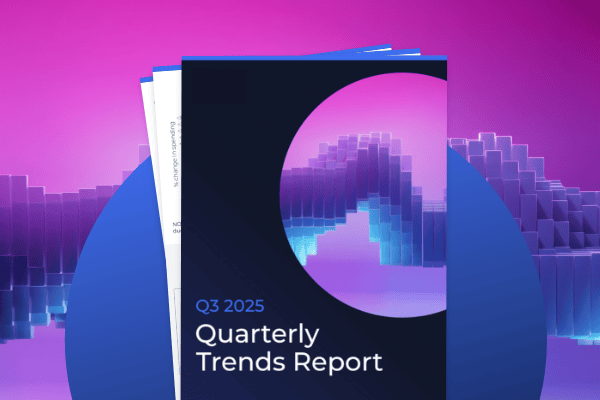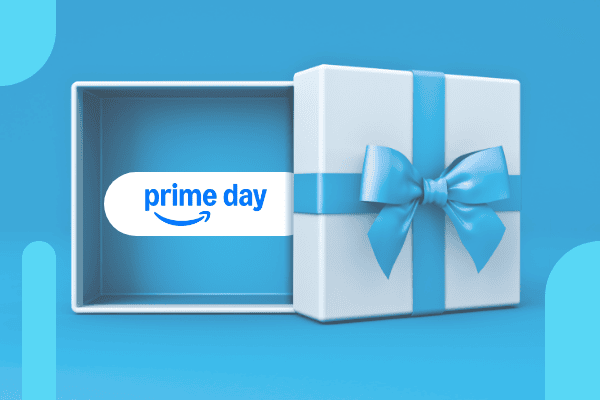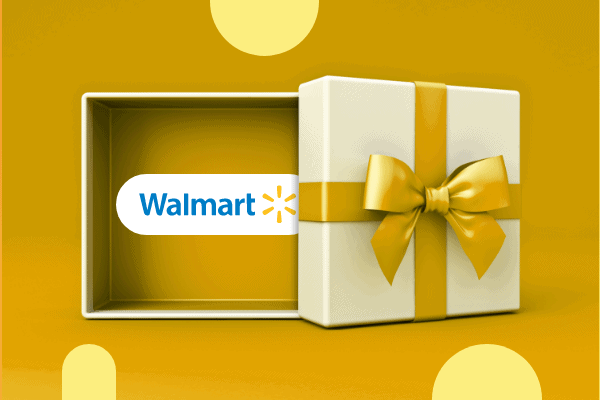Summary
Retail marketers can no longer afford to ignore TikTok’s rise in social commerce. With nearly 70 million U.S. users shopping directly on the platform each month, TikTok is transforming retail by making product discovery, purchase, and post-sale engagement feel native to the content experience. From TikTok Shop and Smart+ Ads to powerful brand partnerships, the platform is proving that social commerce for retail marketers isn’t the future—it’s already here.
Social commerce isn’t new. But something’s shifted. It’s no longer an edge case or a buzzword. Nearly 5% of total U.S. retail ecommerce sales now come from social platforms. That number’s only climbing—and TikTok is at the center of the movement.
What’s wild is how quickly that happened. TikTok went from a lip-syncing app to a full-fledged commerce engine in under five years. The platform now averages 111 million daily active users in the U.S., with people spending close to an hour per day on it. That’s not just scroll time—that’s decision-making time. Discovery, influence, intent. It’s all happening here.
And users aren’t just browsing. 58% say they shop directly on TikTok, which translates to around 70 million monthly shoppers in the U.S. alone. This isn’t hypothetical behavior. It’s happening, and it’s scaled.
Of course, there’s the uncertainty. The headlines about bans, congressional hearings, and forced divestitures are real. But while lawmakers debate, marketers are already learning: TikTok is proof that commerce works when it’s baked into culture—not bolted on.
That’s what makes the moment so compelling. TikTok is “repositioning itself as a shopping platform”. Not aspirationally—functionally. From native checkout to live shopping to in-feed links, it’s not just trying to inspire purchases. It’s making them happen. Let’s break down how.
TikTok’s commerce stack: designed for action
The best-performing commerce tools don’t interrupt behavior—they extend it. That’s the bet TikTok’s making with TikTok Shop, its native storefront built into the content flow. Sellers can tag products, host live shopping events, and fulfill orders directly within the app. No redirects. No handoffs. Just action.
TikTok is also making the Shop experience more flexible for sellers. In 2025, it rolled out updates allowing merchants to customize return windows—from 14 up to 90 days—and added support for more regional shipping carriers. These changes reflect the platform’s push to accommodate seller needs across categories and geographies.
And it’s not just the infrastructure that matters—it’s the trust signals. Take Most Loved, a TikTok-specific badge that highlights products with strong reviews and satisfaction scores. It’s a smart layer that turns crowd sentiment into a conversion cue. As a Retail TouchPoints article put it, the feature helps “bolster shopper confidence and increase visibility” for high-performing products. That kind of lightweight affirmation can move the needle—especially in impulse-heavy categories.
TikTok’s also moving beyond the link-in-bio era. It’s testing product links directly in posts, embedded like hashtags or sounds. According to a Modern Retail article, “the goal is to build a commerce experience that feels as natural as content itself.” That’s the kind of change that reshapes user behavior without anyone realizing it’s happening.
Melissa Yang, Head of Ecosystem Partnerships at TikTok, summed it up well: “Our community loves discovering new businesses and products… and we can’t wait to see more Square merchants showcase their creativity and make real connections with consumers on the platform.” That’s not a PR quote—it’s a signal. TikTok is betting that content is the new storefront. And so far, the results are backing it up.
Just look at this: 67% of users say TikTok inspired a purchase they weren’t planning to make. That’s not a feature stat. That’s a behavior shift.
TikTok Shop is also going global. In March 2025, it officially expanded into France, Germany, and Italy—adding to its footprint across the UK, U.S., and other EU markets. The move signals the company’s intent to become a dominant commerce player across regions where it already holds cultural relevance.
Strategic momentum and partnerships
Tools matter. But partnerships tell you where a platform’s headed. And TikTok’s been busy.
Start with Amazon. The partnership lets TikTok users buy Amazon products without leaving the app. Discovery, consideration, and purchase—seamless. It’s a clear move to reduce friction and add legitimacy. As Barron’s noted, this partnership “marks a significant expansion of TikTok’s ambitions in U.S. retail.”
Then there’s Walmart Connect, which now integrates directly with TikTok. That gives Walmart’s brand partners access to TikTok placements paired with closed-loop measurement. It’s not just ad spend—it’s retail media strategy. In Walmart Connect’s words, the goal is to “engage customers wherever they’re spending time.”
TikTok’s also scaling its creative stack. A recent partnership with Getty Images introduced AI-generated creative tools, helping brands build on-brand visuals faster without sacrificing quality. According to The Verge, it’s about “producing more engaging, faster-turnaround visuals to match TikTok’s fast-moving culture.”
The partnerships aren’t just external. TikTok is also testing “Trendy Beat”, an in-app shopping section stocked with viral products sold directly by ByteDance subsidiaries. The program, currently piloting in the UK, marks the company’s first step into first-party retail—selling what’s trending based on TikTok data.
And don’t overlook moments like the Super Bowl. In 2024, TikTok mobilized creators in real time to activate during the game. The content wasn’t forced—it was part of the cultural conversation. Spiceworks described it as TikTok positionin itself as “the digital companion to real-world events.”
All of these moves point in one direction: TikTok isn’t just enabling commerce—it’s building the context for it.
Advertising: built for conversion
Here’s the truth: commerce only scales on platforms that also monetize well. TikTok gets that. It’s why the ad side of the business is evolving fast.
Formats like In-Feed Ads, Spark Ads, and TopView aren’t just awareness plays. They’re built to convert. And they don’t feel like traditional ads. Spark Ads, especially, let brands boost creator content without breaking the feed. That format alone has become a workhorse for CPG brands that need reach and credibility.
And they’re adding more knobs for performance buyers. In 2025, TikTok introduced Smart+ Ads—an AI-powered campaign type that automates creative selection, bidding, and targeting. Advertisers simply enter their budget and product feed, and Smart+ optimizes for outcomes. For TikTok Shop campaigns, there’s a dedicated version called GMV Max, which automatically prioritizes conversion and higher merchandise value. Recent updates to Smart+ include account-level targeting and expanded brand safety controls—giving marketers greater precision in how and where their ads appear.
Another key addition for performance marketers: TikTok’s Content Suite, which makes it easier to discover creator content and turn it into brand-safe ads. Brands can filter videos for safety, predict performance, and request usage permissions—all within one workflow. The goal is to streamline UGC-based advertising and scale what’s already resonating on the platform.
And marketers are buying in. TikTok’s global ad revenue is projected to hit $33.1 billion in 2025—a 40.5% jump from the year before. That doesn’t happen unless performance backs it up.
It does. Nielsen’s modeling found that TikTok’s In-Feed Ads delivered the highest short-term ROAS and the strongest long-term sales lift for CPG. That’s a rare combo. And it challenges the narrative that TikTok is just a top-funnel tool.
TikTok also recently launched Search Ads Campaigns, allowing advertisers to run keyword-targeted campaigns in TikTok’s search results. To make buying even easier, TikTok rolled out Search Center inside Ads Manager—an AI-powered hub with keyword suggestions, campaign measurement, and performance insights. Together, these tools help brands capture high-intent moments and optimize their presence in the search journey.
Measurement and attribution
Every big commerce platform eventually hits the same wall: measurement. TikTok’s already working on it.
The Nielsen partnership gives advertisers access to cross-media campaign performance, helping teams see how TikTok stacks up alongside linear TV, retail media, and other digital spend. A Research Live explains that it “offers advertisers a comprehensive view of campaign performance, facilitating informed decision-making.” That’s a real unlock—especially for brands juggling fragmented media plans.
TikTok is also expanding its clean room strategy. In 2025, it enabled integrations with AWS Clean Rooms and LiveRamp’s Habu, enabling advertisers to securely match and analyze first-party data alongside TikTok campaign performance. This lets brands validate conversions and measure incrementality—all while preserving privacy.
TikTok’s also rolling out its own brand lift studies, media mix model integrations, and measurement APIs to help brands map content to outcomes. Another valuable tool for refining campaigns is Keyword Insights, which helps advertisers uncover trending keywords and phrases in TikTok ads. Marketers can explore top-performing script words—whether in voice-overs, captions, or text overlays—to fine-tune their creative strategy.
And yes, it’s working. Brands using multiple TikTok ad formats see 10% higher ROAS, according to Nielsen. That’s a strong case for mixing formats and thinking beyond one-and-done ads.
What’s next: roadmap and innovation
No formal roadmap, but the signals are clear.
TikTok is investing in its affiliate network, testing shoppable posts, expanding monetization for creators, and doubling down on AI-powered creative tools. One example: Affiliate Creatives for Ads, a tool that helps brands automatically approve and monetize creator content through affiliate campaigns.
Another standout addition, Insight Spotlight, is a new AI-powered tool that surfaces trending content and keywords, helping brands tailor campaigns to what’s resonating in the moment. The Getty partnership was just the beginning—expect more automation and greater sophistication coming to the ad side.
It’s also scaling education. Product certifications, how-to hubs, creative playbooks. All signals that TikTok’s not just chasing ad dollars—it’s trying to equip brands to win on the platform long term.
While TikTok builds tools for advertisers, it’s also evolving how creators make money. In April 2025, the company replaced its Creator Marketplace with a new platform called TikTok One—a unified hub that helps brands discover creators, launch collaborations, access content trends, and build high-performing ads. The new interface includes an AI-powered creative studio, making it easier to build branded content at scale. TikTok is also rolling out Smart Keyword Filters—AI-powered tools that let users block specific keywords and related terms from their feeds. While user-facing, these filters reflect TikTok’s broader push toward more personalized, controlled experiences—something brands will need to track as content strategies evolve.
This shift reflects the central role creators play in TikTok’s commerce strategy. When influencers can drive real sales—and get rewarded for it—it creates a feedback loop that benefits the whole ecosystem. TikTok One is designed to streamline that loop by giving both sides what they need: tools, transparency, and time savings.
Watch who they’re hiring, too. Commerce strategists. Machine learning engineers. Creator ops specialists. These aren’t support roles. They’re core to how the business grows next.
Closing thoughts
TikTok isn’t dipping a toe into commerce – it’s building a model that makes product discovery native, transactions easy, and performance visible.
It’s forcing marketers—especially in retail and CPG—to rethink what a full-funnel platform looks like. Because TikTok’s not just driving awareness anymore. It’s driving results.
Whatever happens politically, the strategy it’s built is already reshaping how we buy. That’s not going away.







